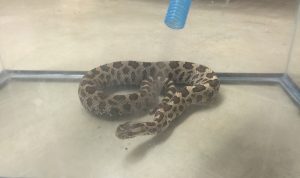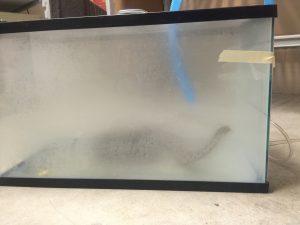Snake fungal disease, caused by Ophidiomyces ophiodiicola, a keratinophilic fungus, has been an increasing threat to several snake populations. This disease is seen more commonly in venomous species. Antifungal therapy is challenging to administer through the traditional routes of administration (oral, intravenous, or topical) of these medications.
The use of a nebulizer, a minimally invasive method, with an antifungal, terbinafine, in cottonmouths (Agkistrodon piscivorus) was studied as a treatment option in 2016 through the Wildlife Epidemiology Laboratory at the University of Illinois College of Veterinary Medicine. Nebulizers have been used in a variety of other species but this is one of the first attempts to administer treatment via nebulization in venomous snakes.
This method allows for both inhalation and topical routes of administration, potentially leading to increased therapeutic benefits by having two methods of drug deposition. This initial study evaluated the pharmacokinetic parameters of terbinafine, or how the snakes process the drug, via high performance liquid chromatography in the snake’s plasma. The study concluded with therapeutic drug concentrations being maintained for 12 hours.
Additional studies are needed, and are currently being performed, on clinically affected snakes with snake fungal disease to document the effectiveness. Nebulizing terbinafine once daily can be utilized on venomous species with minimal handling for treatment of snake fungal disease.
– Veterinary Medicine Basic Sciences Building – location of the home department of this research
Kane, L.P., Allender, M.C., Archer, G., Leister, K., Rzadkowska, M., Boers, K., Souza, M., Cox, S. (2016). Pharmacokinetics of nebulized and subcutaneously implanted terbinafine in cottonmouths (Agkistrodon piscivorus). Journal of Veterinary Pharmacology and Therapeutics 40(5). 575-579 https://doi.org/10.1111/jvp.12406


